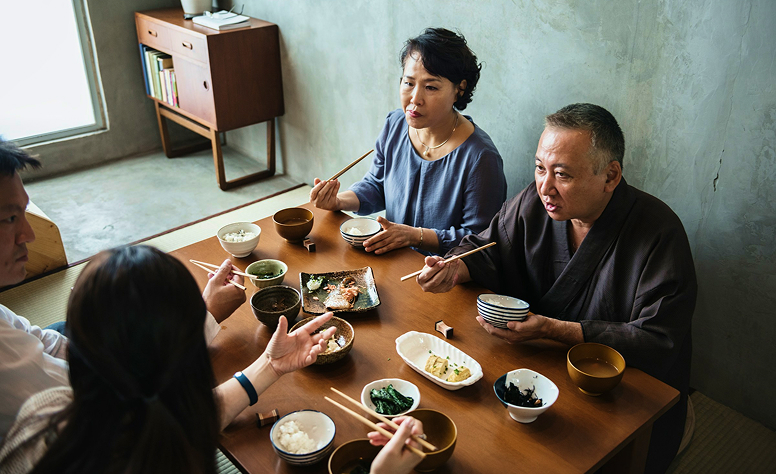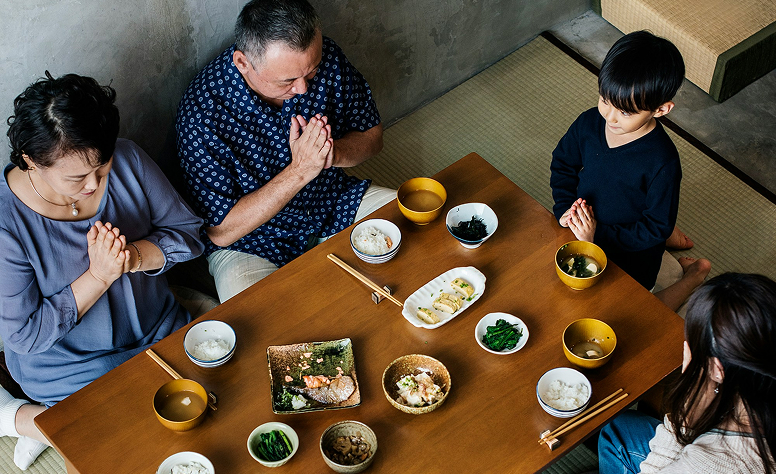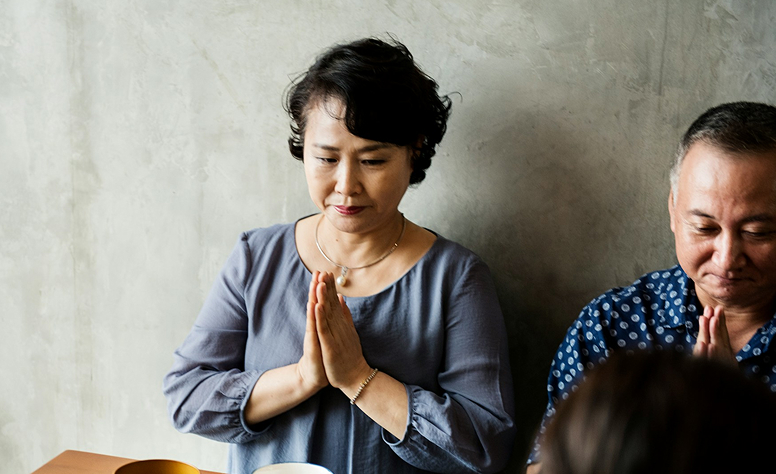Table Of Content
- What Are The Historical & Cultural Roots Of Korean Dining Etiquette?
- What Are The Most Important Elements Of Korean Dining Etiquette?
- 1. From Floor Dining to Modern Tables
- 2. Seating & Order: Who Sits Where?
- 3. Traditional Floor Dining vs. Modern Tables
- 4. Formal vs. Casual Seating Norms
- What Are The Before-Dining Rituals To Learn?
- 1. Greeting Phrases
- 2. Serving Others First
- A Little Guide To Korean Cutlery And How To Use It
- What Are The Do’s And Don’ts Of Korean Utensils?
- Where to Place Spoon & Chopsticks?
- Eating from Shared Plates & Banchan Etiquette
- Using Serving Utensils
- What Are Some Common Korean Dining Etiquette You Must Follow?
- 1. Taking Small Portions & Offering to Others
- 2. Pace, Sequence & Respect During the Meal
- 3. Wait for the Eldest to Begin & End
- 4. Conversational Manners & Posture
- 5. Handling Mistakes Gracefully
- 6. Drinking & Toasting Etiquette
- 7. Pouring Rules — Serve Elders First
- 8. Drinking Posture — Turning Head Away
- 9. Rejecting or Accepting Politely
- What Are The After-Meal Rituals?
- 1. Expressing Gratitude
- 2. Helping Clear the Table
- 3. Paying the Bill Norms
- What Are The Norms For a Korean Business Dinner?
- BBQ/Korean Grill-Specific Etiquette
- Street Food/Casual Dining Do’s and Don’ts
- Regional Differences & Generational Shifts
- Common Etiquette Mistakes & How To Fix Them
- Frequently Asked Questions
In Korea, when people dine, it’s more than just sharing food. It’s sharing respect.
Every seat, every gesture, even the way you lift your spoon, tells a story of courtesy and harmony that has been passed down through the centuries.
To eat well in Korea isn’t just about flavor. I have officially cracked the code, if I may say so myself. It’s about
- Awareness
- Humility
- Connection
In this guide, I will take you inside the world of Korean table etiquette. I will talk about its Confucian roots to modern restaurant manners.
I have explored both traditional customs and modern shifts. So, I am sure I can give you the confidence to dine anywhere in Korea. It can be anywhere from family tables to formal banquets.
What Are The Historical & Cultural Roots Of Korean Dining Etiquette?

Korean table manners were born from Confucian philosophy. These talk about the three most important values:
- Respect
- Hierarchy
- Harmony
Meals traditionally reflected social structure: the eldest led, and everyone else followed in quiet gratitude.
In Korean culture, age and status shape nearly everything. This even includes how people eat together.
Confucian teachings about ye (예). This means, courtesy and ritual guide behaviors at the table.
You wait for elders to begin, you pour for others before yourself. Additionally, you speak softly to maintain balance and respect.
According to Visit Seoul, these customs continue to define even casual meals today. Younger people may be more relaxed. But the gestures of deference, like offering to serve or pour drinks, remain second nature.
Koreans also express jeong (정) through food. This is a deep sense of affection and warmth. Sharing banchan (side dishes) or refilling a friend’s glass isn’t just politeness, it’s a small act of care that strengthens the connection.
What Are The Most Important Elements Of Korean Dining Etiquette?

1. From Floor Dining to Modern Tables
Traditionally, Koreans dined seated on the floor around low tables called soban.
This humble arrangement reflected equality and closeness within the family.
Modern homes and restaurants now use chairs and dining tables, yet the communal spirit remains unchanged.
Meals are still shared, and etiquette still centers on mutual respect rather than formality alone.
2. Seating & Order: Who Sits Where?
In Korean dining, where you sit says as much as what you eat. The most respected person or honored guest always takes the seat farthest from the door — a position symbolizing safety and prestige.
3. Traditional Floor Dining vs. Modern Tables
During traditional meals on the floor, the eldest faces the entrance, while the youngest sits closest to the door, often serving or clearing. Modern tables follow the same rule — just in chair form. Even in restaurants, people pause before sitting, waiting for the host or elder to guide the arrangement.
4. Formal vs. Casual Seating Norms
In formal dinners, always wait to be invited to sit. In casual gatherings, younger guests often offer the best seats to older ones. This small courtesy is one of the simplest ways to show respect — and one of the most noticed.
As Everyday Korea notes, this seating order may seem ceremonial, but it’s really about creating balance. When everyone acknowledges their place, the meal unfolds naturally and gracefully.
What Are The Before-Dining Rituals To Learn?

Before the first bite, several subtle rituals signal respect and readiness.
1. Greeting Phrases
Before eating, say “잘 먹겠습니다” (jal meokgesseumnida), meaning “I will eat well.”
After finishing, say “잘 먹었습니다” (jal meogeosseumnida), meaning “I ate well.”
These phrases are heartfelt ways to thank your host, the cook, or simply acknowledge shared gratitude.
The host often replies, “많이 드세요” (mani deuseyo) — “Please eat a lot.” Simple words, yet they turn a meal into a moment of warmth.
2. Serving Others First
One hallmark of Korean courtesy is considering others before yourself. You never start eating before the eldest does. You pour drinks for others first and offer dishes before serving yourself.
Younger diners may also tidy plates or adjust banchan bowls for elders. These gestures — small, sincere, and wordless — say more than any toast could.
A Little Guide To Korean Cutlery And How To Use It

Koreans use “Sujeo” (수저) — a matched set of a spoon (sutgarak) and chopsticks (jeotgarak).
Unlike in Japan or China, Koreans use both tools equally: the spoon for rice and soups, chopsticks for side dishes.
According to Wikipedia, this pairing evolved because Korean meals often include both rice and soup at every sitting.
What Are The Do’s And Don’ts Of Korean Utensils?
1. Never stick chopsticks upright in rice. It resembles funeral offerings.
2. Use one utensil at a time. Never hold chopsticks and a spoon together.
3. Avoid waving or pointing with chopsticks. It’s impolite and distracting.
4. Don’t lift bowls to your mouth. Keep dishes on the table Koreans bring the spoon to the food, not the other way around.
As Earth Travel Unlimited points out, many visitors accidentally mix habits from other Asian cultures, not realizing how uniquely Korean these distinctions are.
Where to Place Spoon & Chopsticks?
When resting, lay your spoon and chopsticks neatly beside your plate, parallel to each other. Never cross them or leave them sticking out of dishes. Orderliness reflects self-discipline — a quality Koreans quietly admire.
Eating from Shared Plates & Banchan Etiquette
Korean meals center on sharing everyone dips into small dishes of banchan, creating a sense of unity at the table.
Using Serving Utensils
Whenever possible, use the serving chopsticks or spoon provided for communal dishes. If none are available, turn your chopsticks around and use the clean ends. Among family and close friends, this rule relaxes, but in mixed company, it’s essential for hygiene and politeness.
What Are Some Common Korean Dining Etiquette You Must Follow?

These are the basic dining etiquette you must know and follow while you are sharing a table with Korean people.
1. Taking Small Portions & Offering to Others
Rather than piling your plate high, take small portions and refill as needed. Offering dishes to those around you — especially elders — shows care. As the Michelin Guide’s “Etiquette 101” explains, the Korean table isn’t about individual plates; it’s about shared enjoyment and mutual awareness.
2. Pace, Sequence & Respect During the Meal
A Korean meal has its rhythm: respectful silence at the start, quiet conversation in the middle, and gratitude at the end.
3. Wait for the Eldest to Begin & End
No one eats until the eldest takes the first bite. Likewise, leaving the table before others finish can seem dismissive. If you finish early, rest your spoon and wait patiently, perhaps joining in light conversation.
4. Conversational Manners & Posture
Talk softly, never with food in your mouth, and avoid interrupting. Keep your back straight and both hands visible near the table. As FoodInKorea reminds readers, these traditions come from Sasojeol, Korea’s historic etiquette manual, which emphasized calmness and modesty at every meal.
5. Handling Mistakes Gracefully
If you drop food or make a small error, smile and say “죄송합니다” (joesonghamnida) — “I’m sorry.” Koreans value humility and effort far more than perfection.
6. Drinking & Toasting Etiquette
Sharing a drink in Korea — whether soju, makgeolli, or beer — is about connection, not consumption.
7. Pouring Rules — Serve Elders First
Always pour drinks for others, never for yourself. Use both hands when pouring or receiving.
Refill others’ glasses before they’re empty, but let someone else fill yours.
According to Everyday Korea’s “Dining with Dignity”, this custom embodies the give-and-take that underpins all Korean social interaction.
8. Drinking Posture — Turning Head Away
When drinking in front of elders or superiors, turn your head slightly aside and cover your mouth with your hand. This shows modesty — a visual symbol of humility passed down through Confucian practice.
9. Rejecting or Accepting Politely
If you don’t drink, simply smile and say, “오늘은 괜찮아요” (oneureun gwaenchanayo) — “I’m fine today.” Most Koreans will respect your choice. Drinking is about companionship, not pressure.
As Visit Seoul and the Michelin Guide both note, the heart of Korean drinking etiquette lies in sincerity and inclusion — everyone drinks (or doesn’t) together.
What Are The After-Meal Rituals?

When the last bite is taken, the gestures of gratitude begin.
1. Expressing Gratitude
Say “잘 먹었습니다” (jal meogeosseumnida) “I ate well.” It’s the universal sign of respect. Follow with “정말 맛있었어요” (jeongmal masisseosseoyo, “It was really delicious”). A sincere smile completes the ritual better than any gift could.
2. Helping Clear the Table
Younger diners often help stack dishes or clean up. In homes, this is expected; in restaurants, it’s optional but appreciated. Small, unspoken acts like aligning plates neatly or offering to carry a tray signal thoughtfulness.
3. Paying the Bill Norms
Traditionally, the oldest or highest-ranking person pays. Among friends, bills are often split evenly or alternated. Offering to pay, even when you know the elder will decline, is part of the polite dance of gratitude.
What Are The Norms For a Korean Business Dinner?
Work dinners, or hoesik, are a cornerstone of Korean professional life. Here’s how to navigate them:
- Wait for your senior to eat or drink first.
- Always pour for others before yourself.
- Keep conversation friendly and positive.
- Toast with “건배!” (geonbae!) and a slight bow.
- As Everyday Korea explains, harmony at the dining table often translates to harmony at work.
BBQ/Korean Grill-Specific Etiquette
Korean BBQ is communal and interactive. The key is balance:
- Don’t overload the grill — cook in small batches.
- Let the host manage the cooking unless invited to help.
- Use shared tongs, not personal chopsticks.
- Wrap neatly when making ssam (lettuce wraps).
The Michelin Guide calls Korean BBQ “a celebration of participation,” where etiquette enhances enjoyment.
Street Food/Casual Dining Do’s and Don’ts
Street food stalls are informal but still guided by courtesy. Stand neatly, avoid blocking others, and clean up afterward. Always thank the vendor “감사합니다.” Politeness transcends setting.
Regional Differences & Generational Shifts
What Younger Koreans May Skip or Relax
In modern Seoul cafés or casual gatherings, etiquette softens. Younger people may eat before elders if invited, pour drinks casually with one hand, or chat more freely. Still, gestures of respect persist — no one forgets their manners entirely. As Everyday Korea observes, formality fades, but respect endures.
Regional Dietary & Table Style Differences
Southern regions like Jeolla are famous for lavish banchan spreads, while northern and inland areas favor simplicity. Coastal diners use different utensil techniques for seafood. Yet across all regions, courtesy remains the invisible thread tying each meal together.
Common Etiquette Mistakes & How To Fix Them
- Sticking Chopsticks in Rice: Avoid it, it’s linked to funeral rituals. If it happens, remove them calmly and apologize.
- Starting to Eat Too Early: Pause, wait for others, and smile. Awareness counts more than timing.
- Pouring Your Own Drink: Instead, refill others’ glasses. They’ll soon return the favor.
- Lifting Bowls: Keep dishes on the table. Koreans prefer stability and grace.
- Speaking Loudly: Keep your tone soft and respectful. Quiet dining equals thoughtful dining.
Frequently Asked Questions
No. Use your spoon for rice and soup — locals do too.
If invited, yes. Otherwise, wait for the cue.
Apologize lightly and move on. Intent matters most.
Yes — use the clean ends if no serving utensils are available.
Say “오늘은 괜찮아요” (I’m fine today). People will understand.
Usually, the eldest or host, though friends often split.
Better not. Leave it on the table and use your spoon.
Use tongs, don’t crowd the grill, and eat in one bite.
Slightly, North Korea preserves more conservative rituals.














